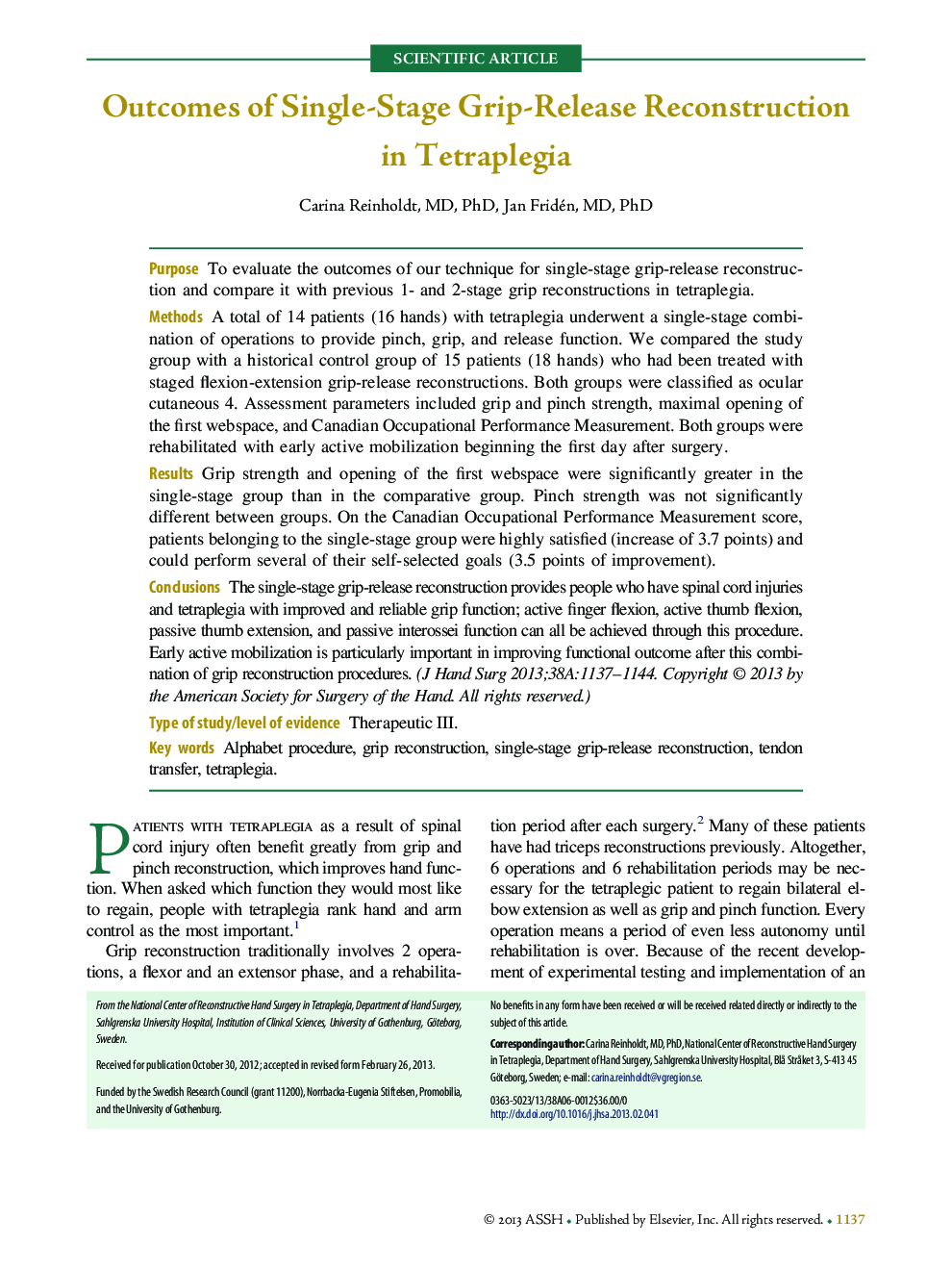| Article ID | Journal | Published Year | Pages | File Type |
|---|---|---|---|---|
| 4067858 | The Journal of Hand Surgery | 2013 | 8 Pages |
PurposeTo evaluate the outcomes of our technique for single-stage grip-release reconstruction and compare it with previous 1- and 2-stage grip reconstructions in tetraplegia.MethodsA total of 14 patients (16 hands) with tetraplegia underwent a single-stage combination of operations to provide pinch, grip, and release function. We compared the study group with a historical control group of 15 patients (18 hands) who had been treated with staged flexion-extension grip-release reconstructions. Both groups were classified as ocular cutaneous 4. Assessment parameters included grip and pinch strength, maximal opening of the first webspace, and Canadian Occupational Performance Measurement. Both groups were rehabilitated with early active mobilization beginning the first day after surgery.ResultsGrip strength and opening of the first webspace were significantly greater in the single-stage group than in the comparative group. Pinch strength was not significantly different between groups. On the Canadian Occupational Performance Measurement score, patients belonging to the single-stage group were highly satisfied (increase of 3.7 points) and could perform several of their self-selected goals (3.5 points of improvement).ConclusionsThe single-stage grip-release reconstruction provides people who have spinal cord injuries and tetraplegia with improved and reliable grip function; active finger flexion, active thumb flexion, passive thumb extension, and passive interossei function can all be achieved through this procedure. Early active mobilization is particularly important in improving functional outcome after this combination of grip reconstruction procedures.Type of study/level of evidenceTherapeutic III.
